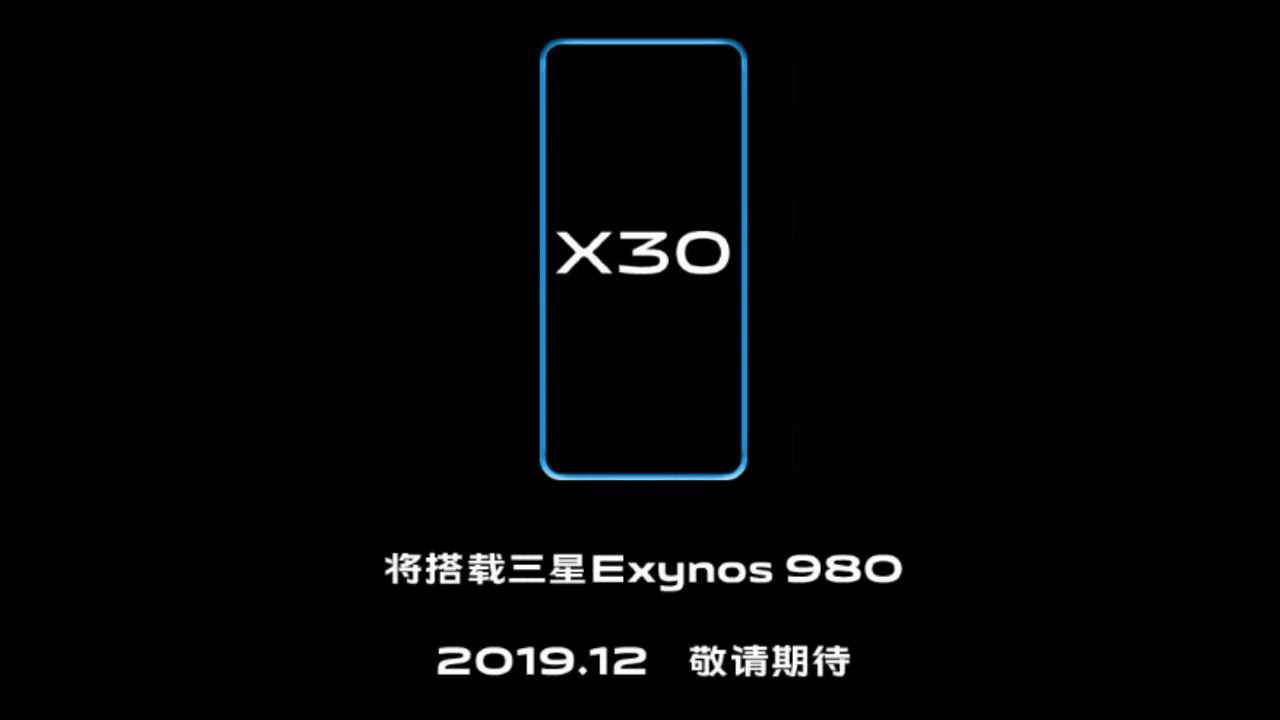Vivo X30 with Samsung Exynos 980 chipset will launch in December

Vivo X30 will be powered by the recently launched Samsung Exynos 980 chipset.
Vivo X30 could launch alongside Vivo X30 Pro in December.
Exynos 980 SoC also comes equipped with a neural processing unit (NPU).
Vivo has announced that it will launch a smartphone, the Vivo X30, powered by the recently launched Samsung Exynos 980 chipset. It will have support for dual-mode 5G as well. At a press briefing in Beijing on November 7, Vivo announced the collaboration with Samsung and elaborated on the performance of Exynos 980 chipset. According to rumours, the Vivo X30 could launch alongside the X30 Pro before the end of 2019.
The Vivo X30 is rumoured to feature a 6.5-inch (2400 x 1080 pixels) Full HD+ display with 20:9 aspect ratio. The AMOLED screen may come with a 90Hz refresh rate. It may come equipped with 8GB LPDDR4X RAM and 128GB/256GB of internal storage. In the optics department, the Vivo X30 could sport a quad rear camera setup: a 64MP primary sensor + a 13MP camera + an 8MP sensor + a 2MP depth sensor.
The Vivo X30 is also said to come in a 12GB RAM + 256GB storage variant and it is tipped to be called the Vivo X30 Pro. The smartphone may feature a 6.89-inch AMOLED display with 90Hz refresh rate. The X30 Pro is rumoured to sport a 60MP triple rear camera setup. It may pack a 4500mAh battery with support for 44W flash charge.
Both the Vivo X30 and X30 Pro will be powered by the Samsung Exynos 980 chipset. To recall, Exynos 980 SoC is Samsung’s first processor with built-in 5G modem. The mobile chipset is based on 8nm FinFET process technology. It is packed with two Cortex-A77 CPU cores and six Cortex-A55 cores, paired with Mali-G76 GPU.
Furthermore, the Exynos 980 SoC also comes equipped with a neural processing unit (NPU), which enhances applications that have secure user authentication, content filtering, mixed reality, intelligent camera, and more. Moreover, Exynos 980 is claimed to deliver fast gigabit downlink speed in 4G LTE and up to 2.55-gigabits per second (Gbps) in sub-6-gigahertz (GHz) 5G.




